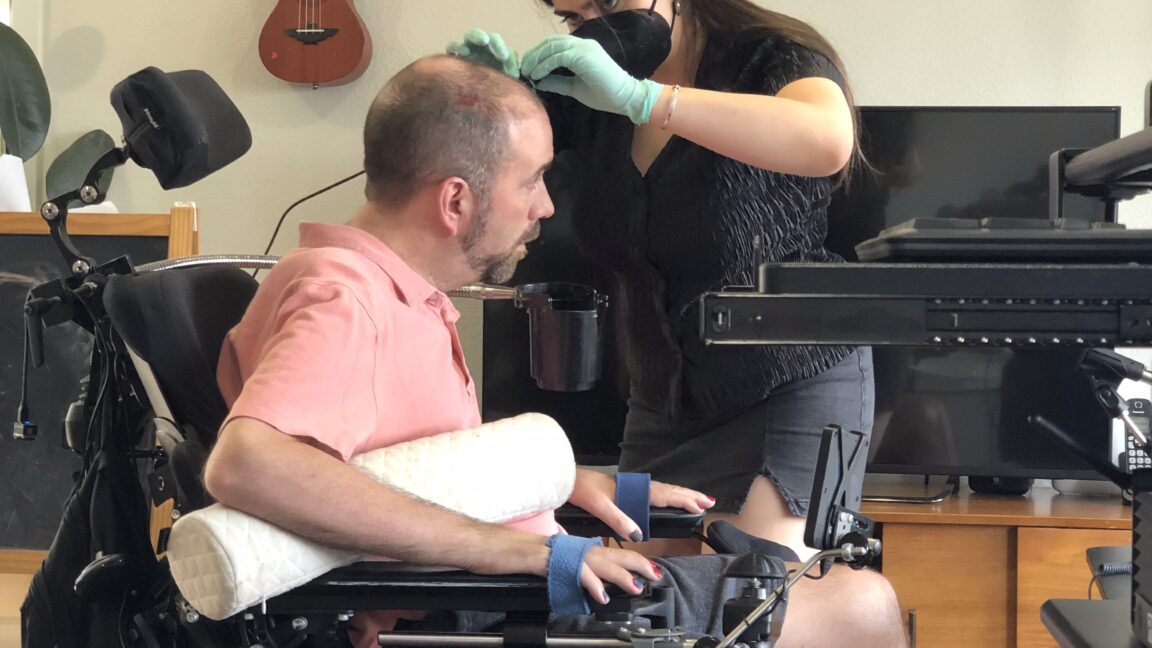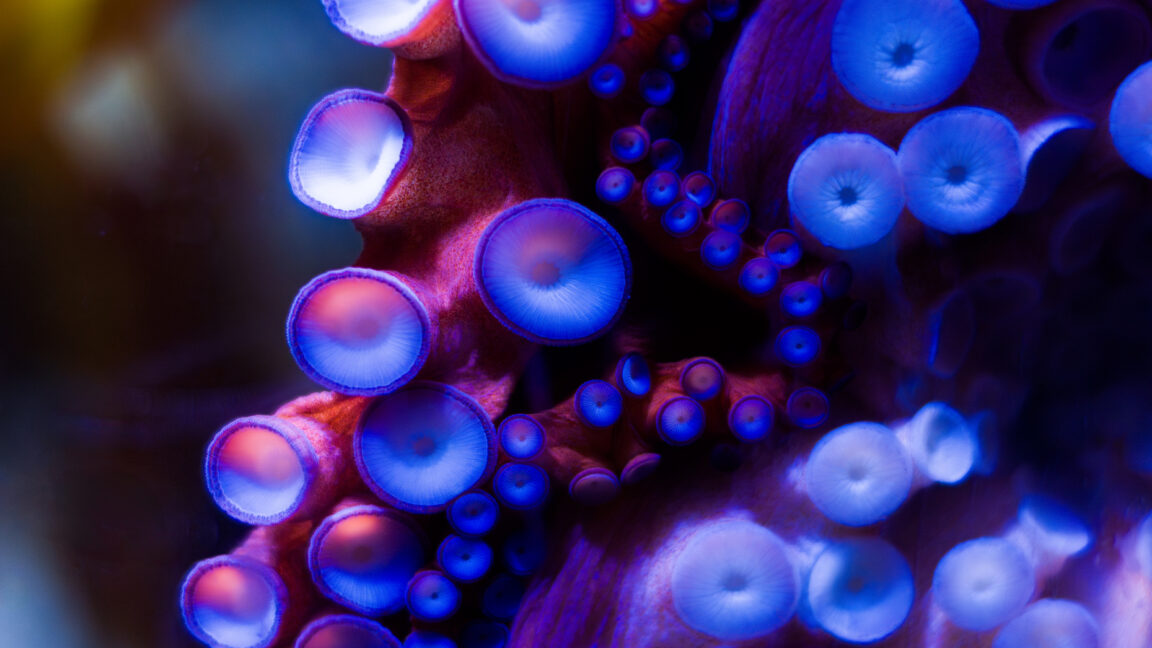
MIT tested its system on a soft robotic hand, a rigid Allegro hand, a 3D-printed arm, and a turning platform without any sensing units.|Source: MIT CSAILIn a workplace at the Massachusetts Institute of Technology Computer Science and Artificial Intelligence Laboratory, or MIT CSAIL, a soft robotic hand curls its fingers to comprehend a little object.
The interesting part isn’& rsquo; t the mechanical style or ingrained sensing units –-- in reality, the hand includes none.
Instead, the entire system depends on a single cam that sees the robotic’& rsquo; s motions and utilizes that visual information to manage it.This capability originates from a system that MIT CSAIL scientists developed.
It provides a various technique to robotic control.
Instead of utilizing hand-designed designs or complex sensor varieties, it allows robots to find out how their bodies react to control commands, exclusively through vision.
The approach, called “& ldquo; Neural Jacobian” Fields & rdquo;(NJF), gives robots a type of physical self-awareness, stated the scientists.
& ldquo; This work points to a shift from shows robots to mentor robots, & rdquo; stated Sizhe Lester Li, lead researcher and a Ph.D.
trainee “at MIT CSAIL.
& ldquo; Today, lots of robotics jobs need extensive engineering and coding.
In the future, we envision revealing a robotic what to do, and letting it discover how to achieve the goal autonomously.”& rdquo; MIT tries to make robots more flexible, affordableThe researchers said their motivation originates from a simple reframing: The primary barrier to economical, flexible robotics isn’& rsquo; t hardware-- It & rsquo; s control of capability, which could be accomplished in multiple methods.
Conventional robotics are constructed to be stiff and sensor-rich, making it easier to construct a digital twin, an accurate mathematical replica used for control.But when a robotic is soft, deformable, or irregularly shaped, those presumptions break down.
Rather than forcing robots to match some models, NJF turns the script by giving them the capability to discover their own internal design from observation.This decoupling of modeling and hardware design might substantially broaden the design area for robotics.
In soft and bio-inspired robots, designers often embed sensors or enhance parts of the structure simply to make modeling feasible.NJF raises that constraint, said the MIT CSAIL team.
The system doesn’& rsquo; t require onboard sensors or design tweaks to make control possible.
Designers are freer to check out unconventional, unconstrained morphologies without stressing over whether they’& rsquo; ll be able to design or manage them later, it asserted.“& ldquo; Think about how you learn to manage your fingers: You wiggle, you observe, you adapt,” & rdquo; said’Li.
& ldquo; That & rsquo; s what our system does.
It explores random actions and find out which manages relocation which parts of the robotic.”& rdquo; The system has proven robust across a range of robotic types.
The team evaluated NJF on a pneumatic soft robotic hand efficient in pinching and grasping, a rigid Allegro hand, a 3D-printed robotic arm, and even a rotating platform with no ingrained sensing units.
In every case, the system learned both the robot’& rsquo; s shape and how it reacted to control signals, simply from vision and random motion.Save now with early riser discountNJF has potential real-world applicationsThe MIT CSAIL researchers said their method has potential far beyond the lab.
Robots equipped with NJF could one day carry out agricultural tasks with centimeter-level localization precision, run on building and construction sites without sophisticated sensing unit varieties, or browse vibrant environments where standard techniques break down.At the core of NJF is a neural network that captures 2 intertwined elements of a robot’& rsquo; s personification: its three-dimensional geometry and its level of sensitivity to control inputs.
The system builds on neural radiance fields (NeRF), a method that rebuilds 3D scenes from images by mapping spatial collaborates to color and density worths.
NJF extends this technique by finding out not just the robotic’& rsquo; s shape, but likewise a Jacobian field, a function that forecasts how any point on the robot’& rsquo; s body relocations in action to motor commands.To train the design, the robotic performs random movements while multiple electronic cameras record the results.
No human supervision or anticipation of the robot’& rsquo; s structure — is required-- the system simply infers the relationship in between control signals and movement by watching.Once training is total, the robotic only needs a single monocular video camera for real-time closed-loop control, running at about 12 Hertz.
This permits it to continuously observe itself, plan, and act responsively.
That speed makes NJF more feasible than lots of physics-based simulators for soft robots, which are frequently too computationally extensive for real-time use.In early simulations, even simple 2D fingers and sliders were able to discover this mapping utilizing simply a few examples, kept in mind the scientists.
By modeling how particular points warp or shift in response to action, NJF builds a dense map of controllability.
That internal design allows it to generalize movement across the robotic’& rsquo; s body, even when the data is loud or insufficient.“& ldquo; What & rsquo; s really interesting is that the system figures out by itself which motors control which parts of the robot,” & rdquo; said Li.’& ldquo; This isn & rsquo; t programmed-- it emerges naturally through knowing, just like an individual discovering the buttons on a brand-new gadget.”& rdquo; The future of robotics is soft, says CSAILFor years, robotics has actually favored rigid, easily designed makers –-- like the industrial arms discovered in factories –-- due to the fact that their residential or commercial properties simplify control.
But the field has actually been approaching soft, bio-inspired robots that can adapt to the real world more fluidly.
The tradeoff? These robots are harder to model, according to MIT CSAIL.“& ldquo; Robotics today typically feels out of reach due to the fact that of expensive sensing units and complicated programs,” & rdquo; stated Vincent Sitzmann, senior author and MIT assistant teacher.
“& ldquo; Our objective with Neural Jacobian Fields is to lower the barrier, making robotics cost effective, versatile, and accessible to more individuals.”“& rdquo; & ldquo; Vision is a durable,” reputable sensing unit, & rdquo; added Sitzmann, who leads the Scene Representation group.
“& ldquo; It opens the door to robots that can operate in untidy, disorganized environments, from farms to construction sites, without costly facilities.”“& rdquo; & ldquo; Vision alone can supply the cues required for localization and control—-- removing the requirement for GPS, external tracking systems, or intricate onboard sensing units,” & rdquo; noted co-author Daniela Rus, the Erna Viterbi Professor of Electrical Engineering and director of MIT CSAIL.“& ldquo; This opens the door to robust, adaptive habits in unstructured environments, from drones navigating indoors or underground without maps, to mobile manipulators working in cluttered homes or warehouses, and even legged robots traversing irregular terrain,” & rdquo; she stated.
& ldquo; By gaining from visual feedback, these systems develop internal designs of their own motion and dynamics, allowing flexible, self-supervised operation where conventional localization techniques would stop working.”& rdquo; While training NJF currently requires numerous electronic cameras and should be redone for each robotic, the scientists have actually currently thought about a more available variation.
In the future, hobbyists might tape-record a robot’& rsquo; s random movements with their phone, just like you’& rsquo;d take a video of a rental car before driving off, and use that footage to create a control model, without any prior knowledge or special equipment required.MIT team deals with system’& rsquo; s limitationsThe NJF system doesn’& rsquo; t yet generalize across various robotics, and it lacks force or tactile picking up, limiting its effectiveness on contact-rich tasks.
The group is exploring new methods to resolve these restrictions, consisting of improving generalization, managing occlusions, and extending the model’& rsquo; s ability to factor over longer spatial and temporal horizons.“ & ldquo; Just as people establish an intuitive understanding of how their bodies move and respond to commands, NJF offers robots that sort of embodied self-awareness through vision alone,” & rdquo; Li said.
& ldquo; This understanding is a structure for versatile control and control in real-world environments.
Our work, essentially, reflects a wider trend in robotics: moving away from by hand setting comprehensive models towards teaching robots through observation and interaction.”& rdquo; This paper united the computer vision and self-supervised learning work from principal detective Sitzmann’& rsquo; s laboratory and the competence in soft robotics from Rus’ & rsquo; lab.
Li, Sitzmann, and Rus co-authored the paper with CSAIL Ph.D.
students Annan Zhang SM ’& rsquo; 22 and Boyuan Chen, undergraduate scientist Hanna Matusik, and postdoc Chao Liu.The research was supported by the Solomon Buchsbaum Research Fund through MIT’& rsquo; s Research Support Committee, an MIT Presidential Fellowship, the National Science Foundation, and the Gwangju Institute of Science and Technology.
Their findings were released in Nature this month.The post MIT CSAIL’& rsquo; s new vision system assists robots understand their bodies appeared first on The Robot Report.

 11
11
















